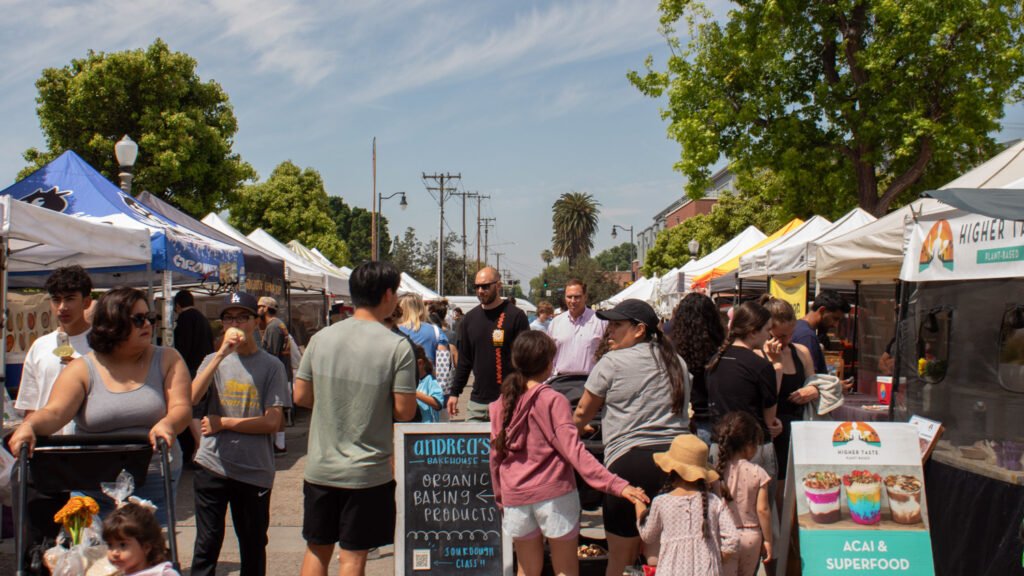OC’s Farmer’s Markets: A Launchpad for Local Entrepreneurs
On a sun-soaked Saturday morning in Buena Park, the air buzzes with excitement as locals pour into the Buena Park Farmers’ Marketplace. Vibrant stalls are laden with fresh produce, homemade pastries, and artisan crafts. Each vendor proudly presents their goods, eyeing for new faces and loyal customers alike. At the heart of this bustling market is the realization that these gatherings do more than supply fresh fruits and vegetables—they are vibrant incubators for local entrepreneurs, offering a unique opportunity for aspiring business owners to connect directly with their community.
The Heart of Agriculture: A Historical Perspective
Farmers’ markets in the U.S. date back to 1730, reflecting a rich tradition of community-based commerce rooted in local agriculture. The Certified Farmers Market program, established in California in 1977, legitimizes these markets, empowering local producers to sell their goods directly to consumers. In Orange County alone, over 30 certified markets spread across various communities, creating a vital link between local farmers and residents.
“Farmers markets are like the heartbeat of local agriculture; they nurture not just crops but the community’s entrepreneurial spirit,” says Dr. Emily Rodriguez, an agricultural economist at UCLA. “These markets fulfill a dual role: providing fresh produce and functioning as a low-risk entry point for new businesses.”
Local Voices: Stories from the Stalls
The Orange Homegrown Farmers and Artisans Market in Orange stands out as a prime example of how these markets foster entrepreneurship. Market Manager Nikki Patiño believes community connection is at the core of its success. “Orange Homegrown has created a supportive environment for both consumers and vendors over nearly 14 years,” she explains. “Farmers markets are great incubators for small businesses; they provide exposure and allow vendors to test products with minimal investment.”
Lidia Jaime, a farmer at Black Sheep Farms, echoes this sentiment, noting that markets grant small family-owned operations the chance to thrive. “We grow specifically for farmers’ markets because we wouldn’t have enough products every day for a traditional store,” she shares. This tailored approach benefits both the business and its customers, who gain access to fresh and seasonal produce.
The Vendor Experience
- Low Entry Costs: Vendors often face minimal upfront expenses compared to renting a store.
- Direct Customer Interaction: Engaging directly with customers helps vendors refine their offerings based on real-time feedback.
- Community Support: Local residents tend to promote and support their favorite vendors through word-of-mouth and social media.
John Tibbetts, owner of Chonky Donkey Bakery, started his journey at the Buena Park Farmers’ Marketplace and has seen the impact firsthand. “I used to have to get a separate permit for each market, but now having an annual permit covering all events has made my life easier,” he states. The backing of a vibrant community has propelled him toward a brick-and-mortar location, a dream he’s actively working towards.
Fostering Diverse Offerings
While fresh produce dominates many stands, the market is a melting pot of creativity. Local bakers, artisans, and specialty food vendors create a rich tapestry of offerings. Sarah Ray of Ray’s Produce highlights the significance of variety. “The management ensures that we’re not competing against ourselves by selling the same products. A diverse market attracts more customers, which ultimately benefits all of us,” she notes.
Experts agree that variety is key for sustaining farmers’ markets. According to a study led by the National Farmers’ Market Coalition, markets with a broader range of vendors are twice as likely to thrive. “The synergy created when various entrepreneurs come together not only draws larger crowds but fosters collaboration, leading to unique product offerings,” states Dr. Stephen Magee, a sociology professor specializing in community studies at UC Irvine.
Navigating the Challenges
While the prospects are alluring, the journey isn’t without obstacles. Vendor hurdles include understanding local regulations and establishing the necessary permits. Guidelines from the Orange County Agricultural Commissioner’s Office necessitate initial inspections and ongoing certification to ensure compliance with health and safety standards. Tobin Jensen, a local regulatory specialist, emphasizes the importance of these measures. “The inspections not only protect consumers but help maintain the integrity of farmers’ markets,” he asserts.
Patiño advises new vendors to explore existing markets before opening a stall. “Understanding the product landscape ensures that you’re not over-saturating the market with similar offerings,” she advises, encouraging potential vendors to do their research.
The Future of Farmers’ Markets in OC
With a growing emphasis on sustainability and local sourcing, the future of farmers’ markets appears bright. As awareness of health issues and environmental impact increases, consumers are gravitating towards local, fresh options. This shift opens new avenues for entrepreneurs willing to adapt and innovate. “The potential for growth is there, especially as more people seek sustainable options,” says Rodriguez. “Farmers’ markets are uniquely positioned to meet this interest.”
In ongoing dialogues and interactions among vendors and consumers, markets like Orange Homegrown and Buena Park foster a thriving ecosystem that nourishes both community connection and entrepreneurial spirit. Vendors continue to inspire each other, challenge norms, and actively shape their narratives in a marketplace that values quality, connection, and authenticity.
As fathers carry bags of fresh oranges to their children and friends catch up over artisanal cookies, it’s evident that these markets are not just venues for sales—they are bustling arenas where small dreams take root and flourish, leading to a more sustainable community.





